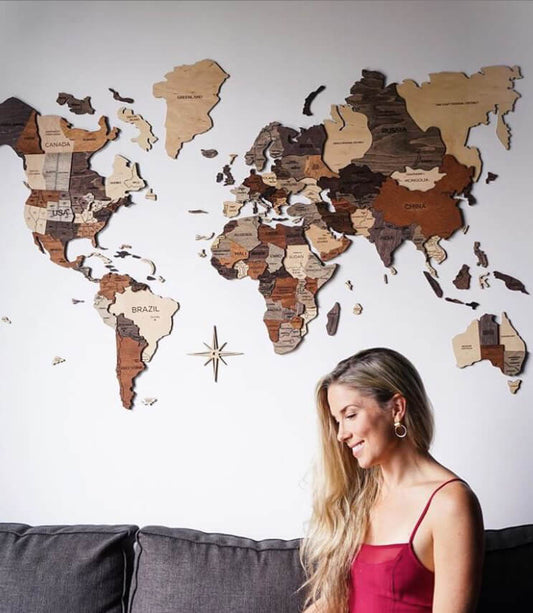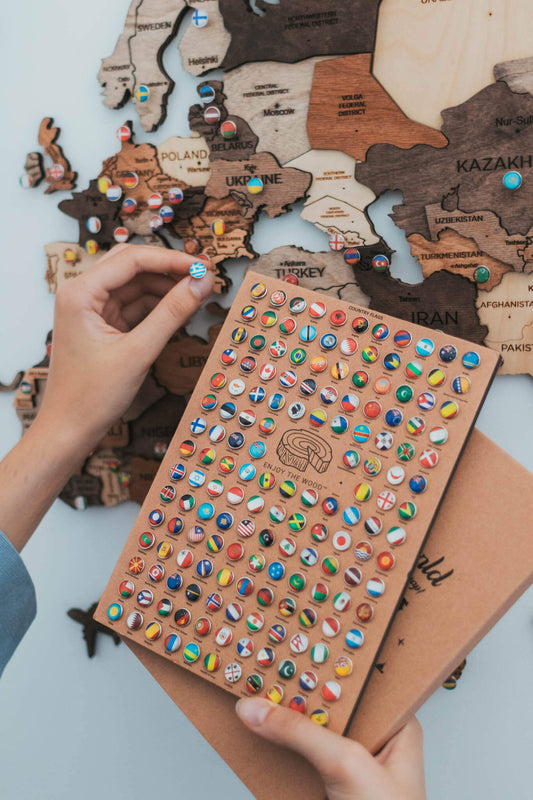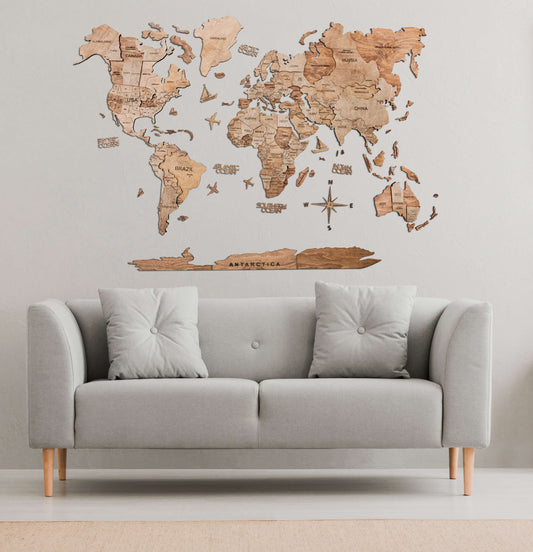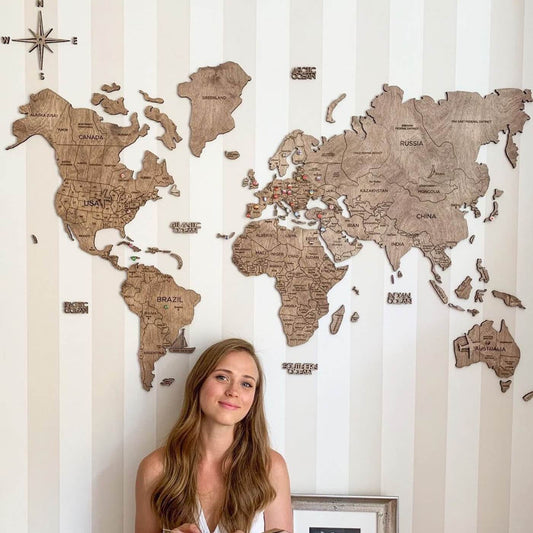In recent years, homeschooling has seen a significant surge in popularity, driven by various factors such as flexibility, individualized learning, and the desire for a more hands-on education. Within this educational movement, geography holds a crucial place. Geography not only helps students understand the world around them but also fosters important skills like critical thinking and spatial awareness. In this guide, we'll delve into the basics of homeschooling geography and explore the value of incorporating visual aids, specifically the beautiful wooden world map wall art, into your lessons.

The Basics of Homeschooling Geography
Setting the Goals and Objectives
When embarking on the journey of homeschooling geography, it's essential to define clear goals and objectives. Ask yourself what you want your child to learn and achieve through geography education. Is it about understanding different cultures, exploring physical landscapes, or comprehending global issues like climate change and geopolitics? Setting these goals will guide your curriculum choices.
The Power of Hands-On and Visual Learning
Geography is a subject that thrives on hands-on and visual learning. Instead of confining learning to textbooks and worksheets, encourage exploration through maps, globes, and interactive resources. Geography comes to life when students can see and touch the concepts they're studying.

Essential Resources for Homeschooling Geography
Traditional Resources
Traditional resources like textbooks and atlases still have their place in geography education. They provide a structured framework and a wealth of information. However, to make geography engaging, consider supplementing these materials with more interactive and visual options.
Embracing Technology
Incorporating technology is a game-changer in modern homeschooling. Interactive maps and geography software bring dynamic and real-time data to your lessons. Websites and apps offer virtual field trips, allowing students to explore distant places from the comfort of home.
The Role of Hands-On Materials
Hands-on materials, such as puzzles, globes, and tactile maps, cater to different learning styles. They can be particularly helpful for younger learners who benefit from a sensory approach to understanding geography.

The Power of Visual Learning
Enhancing Geography Education
Visual aids have a unique ability to enhance geography education. They help students grasp spatial relationships, make connections between regions, and understand the impact of geography on human history and culture.
Benefits of Visual Elements
Visual elements like maps, charts, and diagrams simplify complex information. They allow students to visualize data, which is especially valuable when studying topics like population distribution, climate patterns, or migration routes.

Wooden World Map: A Creative Tool
Introducing Wooden World Map Wall Art
One creative and versatile resource that can revolutionize your homeschooling geography journey is the wooden world map. These stunning pieces not only serve as educational tools but also as aesthetically pleasing décor for your homeschooling space.
Aesthetic Appeal and Durability
Wooden maps are a feast for the eyes. Crafted with precision, they showcase the continents, oceans, and countries in intricate detail. They become a focal point in any room, fostering a sense of exploration and curiosity. Moreover, their durability ensures they last through years of homeschooling adventures.
Dual Purpose: Decor and Education
What makes wooden maps truly exceptional is their dual purpose. It's not just a map; it's a piece of art that sparks conversations and encourages learning. It serves as a constant reminder of the beauty and diversity of our planet.
Finding and Choosing the Right Wooden Map
When selecting a wooden world map, consider factors like size, style, and level of detail. Think about where you'll hang it and how it fits into your overall homeschooling environment. Wooden maps come in various designs and colors, from natural to painted ones, ensuring there's one to suit your preferences.

Integrating a Wooden Map Wall Art into Lessons
Unleashing Creativity
One of the most exciting aspects of using a wooden world map in your geography lessons is the creativity it unlocks. Here are some imaginative ideas to consider:
- Historical Mapping: Explore historical events by tracing the routes of explorers or mapping out ancient civilizations.
- Trade Routes and Economics: Use the map to understand global trade routes, the flow of goods, and economic interdependence.
- Geography Facts: Make learning fun by quizzing your child on capital cities, mountain ranges, or major rivers, using the map as a reference.
Interactive Learning
Transform your wooden world map into an interactive tool. Attach removable markers or labels for an engaging hands-on experience. Encourage your child to mark places they'd like to visit, track current events, or plan imaginary journeys.
Conclusion
Homeschooling geography is a remarkable journey of discovery, and with the right resources, it can be both engaging and enlightening. Wooden world map wall art is more than just a decoration; it's a gateway to exploring our planet and understanding its diverse cultures, landscapes, and histories. As you embark on this adventure, remember that geography education equips your child with valuable skills and knowledge about the world, nurturing their curiosity and global awareness.
In a world where understanding our planet's intricacies is more critical than ever, geography education plays a pivotal role. So, whether you choose traditional methods, embrace technology, or incorporate visual aids like the captivating wooden world map, know that you're empowering your child with the tools they need to navigate our complex and interconnected world.
FAQ
Where can I purchase a wooden world map wall art?
The best way to get your wooden map is to check out our online store and choose the color and size, that fits your requirements. Also, there are flag pins available for your map.
Are there wooden world maps suitable for younger learners?
Absolutely! Wooden world maps are suitable for all ages. A beautiful wall map can spark the imagination of the young ones and engage and educate them.
How can I incorporate a wooden world map into geography lessons for multiple age groups?
Consider creating activities or projects that can be adapted to different age levels. For younger learners, focus on basic geography concepts, while older students can delve into more complex topics like geopolitics or environmental issues using the same map as a visual aid.
Frequently Asked Questions




